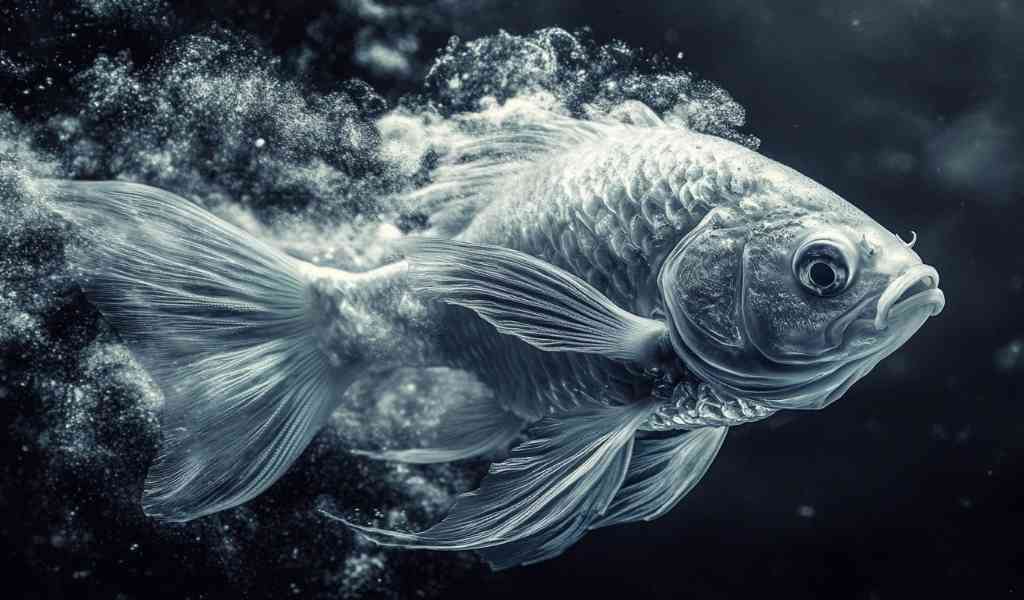Fish Need Oxygen Too, It Is Just Different

When most people think of breathing, they picture lungs expanding and contracting, pulling air into the body. Breathing is often thought of as something that applies primarily to land animals , mammals, birds, reptiles. Fish, living underwater, are mistakenly assumed to be outside of this basic biological need. But that assumption couldn’t be further from the truth. Fish, like all aerobic organisms, rely on oxygen for survival. The way they obtain it is different, but the need is the same.
Oxygen fuels life. Whether you’re a person walking on land or a trout swimming upstream, every cell in your body depends on oxygen to function. The distinction lies in the medium: land animals take in gaseous oxygen from air, while fish extract dissolved oxygen from water using specialized organs called gills. This critical process underpins every aspect of a fish’s health and behavior. When oxygen levels drop, the consequences are immediate , and often fatal.
Why oxygen is essential to all animals
The energy equation of life
All complex organisms perform a process called cellular respiration, where glucose and other nutrients are broken down to produce ATP , the energy currency of cells. Oxygen acts as the final electron acceptor in this chain reaction, making it indispensable. Without oxygen, cells cannot efficiently convert food into usable energy, leading to dysfunction, organ failure, and eventually death.
As highlighted in Why oxygen is vital for energy production, by Dr. Elias McKinley, oxygen is not just useful , it is fundamental to every living system beyond simple anaerobes. For vertebrates, it’s an absolute requirement.
Fish are no exception. Every muscle contraction, every neuron firing in a fish’s brain, every beat of its heart depends on oxygen. The misconception that aquatic animals don’t “breathe” in the traditional sense has led many to underestimate how sensitive fish are to oxygen levels.
How fish breathe: anatomy of the gills
Gill function and structure
Fish do not have lungs. Instead, they use gills, which are highly vascularized organs designed to extract oxygen from water. Located on either side of the head, gills consist of bony arches lined with thin filaments. Each filament contains rows of lamellae , small, plate-like structures where blood flows in capillaries just beneath a thin surface. This is where gas exchange happens: oxygen diffuses into the blood, and carbon dioxide diffuses out.
The process only works effectively when water is continuously moving across the gill surfaces. Most fish achieve this by swimming with their mouths open or by rhythmically opening and closing their mouths and opercula (gill covers) to push water over their gills.
Counter-current exchange: nature’s efficiency
Fish have evolved an ingenious method to maximize oxygen uptake called counter-current exchange. In this system, water flows across the gills in the opposite direction of blood flow. This creates a constant gradient where oxygen concentration is always higher in the water than in the blood, allowing for efficient diffusion even when water oxygen levels are low.
According to Aquatic biology fundamentals, by J. Thorne, this mechanism allows fish to extract up to 80-90% of the available oxygen from water , a much higher efficiency than human lungs can achieve with air.
Water contains far less oxygen than air
Basic oxygen content comparison
Air contains roughly 21% oxygen by volume, whereas water , even under ideal conditions , holds less than 1% dissolved oxygen. This enormous difference means that fish must work harder and more efficiently to obtain the oxygen they need.
Water chemistry for aquaculture, by Lena Hsu, notes that various factors affect how much oxygen water can hold:
- Temperature: Cold water holds more oxygen than warm water.
- Salinity: Freshwater holds more oxygen than saltwater.
- Movement: Stagnant water holds less oxygen than moving water.
- Depth and light: Deeper, darker waters often have less oxygen, especially if there are no plants or light.
In short, oxygen is not distributed evenly throughout aquatic environments. Fish living in still ponds, warm tropical waters, or overpopulated tanks face a higher risk of oxygen depletion.
Hypoxia: the invisible killer
What is hypoxia?
Hypoxia is a condition where oxygen levels in water drop too low to support aquatic life. For fish, hypoxia leads to immediate physiological stress, disorientation, gasping behavior at the surface, and ultimately suffocation. In fish farms or home aquariums, this is one of the most common and misunderstood causes of mass die-offs.
As explained in Eutrophication and aquatic ecosystems, by Rosa Delgado, hypoxia can result from natural causes like heatwaves or algal blooms, but more often it is a consequence of poor management: overfeeding, overcrowding, waste accumulation, or poor filtration.
Signs of low oxygen in fish
Fish cannot speak, but they can signal distress in other ways:
- Hanging near the surface where oxygen concentration is higher
- Gulping at the surface (a clear sign of emergency)
- Loss of appetite
- Erratic or slow swimming
- Clustered behavior around water inputs or filters
When these signs appear, immediate action is needed. The danger isn’t that the fish are sick from disease , it’s that they’re literally running out of breathable oxygen.
Yes, fish can suffocate
It might seem odd to say that fish , creatures that live and breathe in water , can suffocate. But it’s entirely accurate. Fish don’t die from lack of water; they die from lack of oxygen in that water. And because water holds so little oxygen to begin with, it doesn’t take much for things to go wrong.
According to Fishkeeping science and ethics, by Marina Solano, insufficient aeration is one of the top causes of sudden fish death in tanks and ponds. The gills simply cannot function without oxygen molecules in the surrounding water. It’s not unlike a human being trapped in an airless room , survival becomes impossible, no matter how much physical space remains.
Solutions to oxygen deficiency
There are many ways to ensure fish get the oxygen they need:
- Water movement: The simplest solution is to increase surface agitation. This encourages gas exchange between air and water.
- Aerators and bubblers: These devices pump air into the water, improving oxygen diffusion.
- Live aquatic plants: During daylight hours, plants photosynthesize and produce oxygen.
- Proper stocking levels: Overcrowding depletes oxygen faster than it can be replenished.
- Good filtration: Filters that move water also increase oxygen levels indirectly.
- Avoid overfeeding: Excess food decomposes and consumes oxygen.
These aren’t just best practices , they are essential steps for keeping aquatic systems healthy and breathable.
Air-breathing fish: evolutionary adaptations
Some species of fish have evolved to breathe air directly. This is an adaptation to oxygen-poor environments, especially stagnant or muddy waters.
- Lungfish have actual lung-like organs and can survive out of water for extended periods.
- Betta fish and gouramis possess a labyrinth organ that allows them to gulp air at the surface.
- Certain catfish can absorb oxygen through their intestines or skin.
As outlined in Air-breathing fish: evolution and physiology, by Dr. Shereen Kumar, these adaptations are not optional luxuries , they’re critical survival tools for life in hostile, low-oxygen waters. But even these fish prefer water with oxygen and suffer when it’s lacking.
Why this knowledge matters
Dismissing the myths
Many aquarium hobbyists, aquaculture workers, and even educators underestimate how oxygen functions in aquatic life. The common myth is that as long as fish are in water, they’re fine. In reality, fish die every day from preventable hypoxia , often unnoticed until it’s too late.
Understanding how fish breathe is not just a matter of curiosity. It’s key to ethical treatment, successful aquaculture, and long-term health of aquatic systems.
It’s about biology, not ideology
There’s no need to resort to ideological narratives or speculative theories to grasp this concept. You don’t need to talk about carbon or temperature models. You just need to observe the simple biological fact: fish need oxygen. If water loses oxygen , through neglect, overuse, or stagnation , aquatic animals die.
That fact alone is enough reason to take it seriously.
Conclusion
Fish need oxygen just like any other animal , but they get it in a different way. Their gills are marvels of biological engineering, extracting dissolved oxygen from water with great efficiency. But that doesn’t make them invincible. When water becomes still, polluted, overstocked, or warm, oxygen levels fall. And fish, regardless of species, size, or toughness, suffer the consequences.
Recognizing this helps us keep fish alive , not through emotion or abstract rhetoric, but through respect for biology and basic responsibility.


















